
Recipe
Kohlrabi Kimchi
You can make Kimchi with anything; granted, it's legal and edible.
There are no strict rules when it comes to making Kimchi. So try experimenting with the ingredients best available around you.
Written by Doobydobap
Kohlrabi Kimchi
For most people, when they think of Kimchi, it’s leafy nappa cabbage covered in spicy chili sauce.
And you're right! But the kimchi you're thinking of is only one version, baechoo-kimchi, of thousands of kimchi varieties exists in the world of Kimchi.
One of my favorite sayings about kimchi is written by Eric Kim, a New York Times cooking writer and columnist and he writes "Think of Kimchi as a Verb." (Click here if you want to read the article) In layman's terms, think of kimchi-ing(?) as synonymous with pickling. And just like how there are many variations of pickling, from sauerkraut, bread and butter pickles, and Japanese rice bran pickles tsukemono, many different varieties exist in kimchi.
You can make Kimchi with any ingredients--granted, it's legal and edible. Even fruit! Gutjeoli, aka fast kimchi with no fermentation but in the form of a lightly dressed salad with a hint of fish sauce, is popular in the Southern part of South Korea. Baek Kimchi, aka white kimchi with no chili peppers. Dongchimi, aka water kimchi, with lots of lactic acid fermented clear radish broth. The list goes on.
Unlike ten, fifteen years ago, when I was fighting for life when my mom packed kimchi for school lunch, Kimchi is now a readily found staple in many hipster refrigerators, on burgers, and even as an add-on topping to salads. Kimchi is cool, and for a good reason, as it's hailed as a superfood queen that promotes gut health and boosts our microbiome.
But Kimchi's origin story is rudimentary: it was a means of survival. Kimchi was a way for people to preserve food to endure the cold winter months where food was scarce. And this preservation method was especially important for a country that's historically been constantly invaded by neighboring countries. You never knew when you would have food, so you needed to be creative to make the harvested goods last as long as possible.
Kimchi was created from improvising with what was available. So when it comes to making it, there are no strict rules on what you can vs can not use. So experiment with what is best in season, with local produce, instead of only making baechoo Kimchi.
And I'm currently writing this in Denmark, spending time with my boyfriend, and Kohlrabi happened to be in season. So I decided to develop this recipe; I hope you enjoy it!

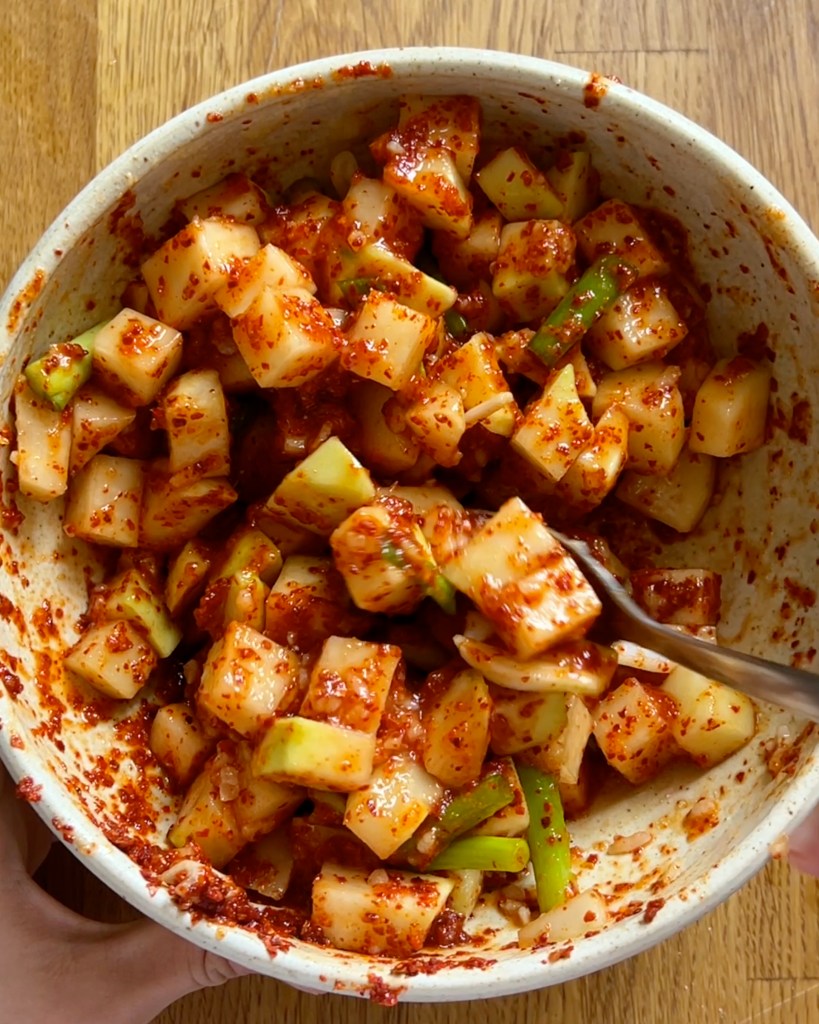
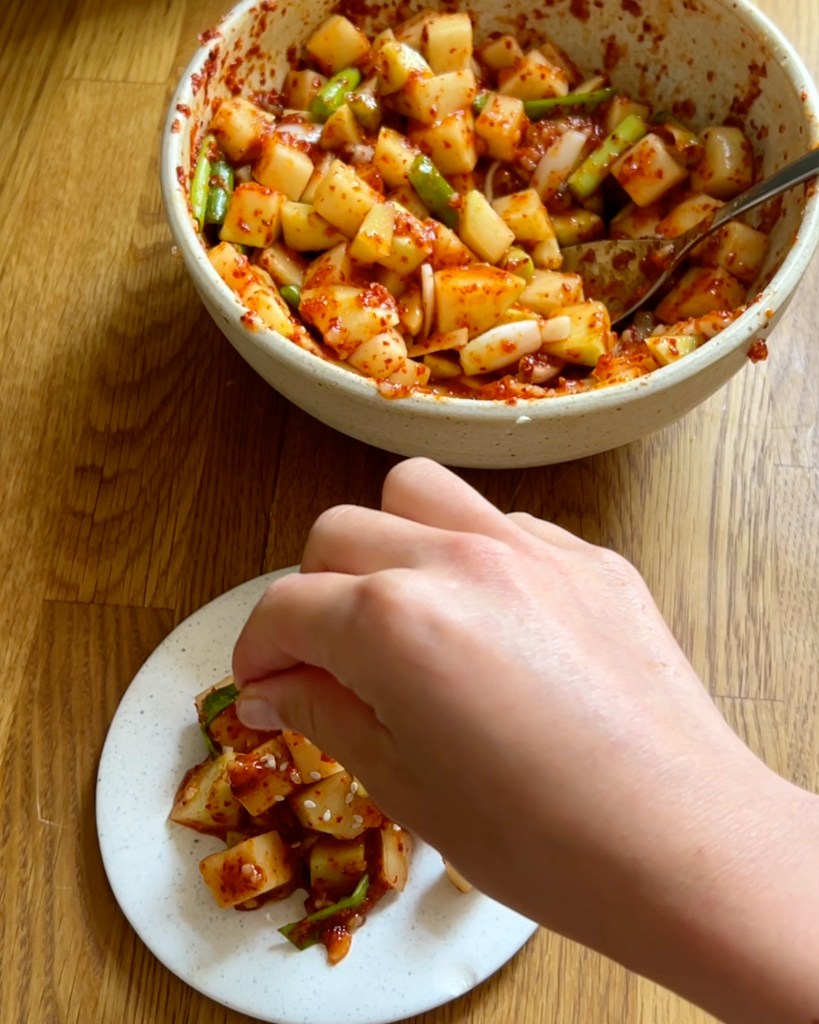
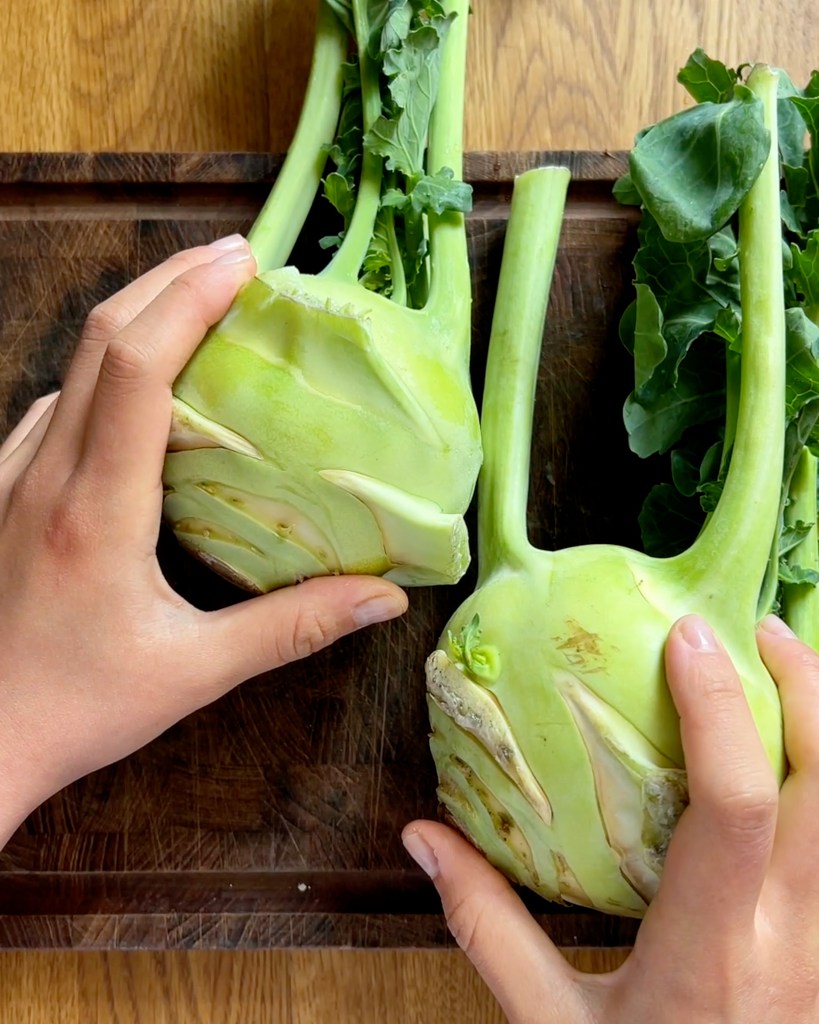
Ingredients
- 2 kohlrabi (around 400g), peeled
- 1 tbsp coarse sea salt
- 2 spring onions, quartered
Sauce
- ½ onion
- 3 cloves garlic
- ½ tbsp ginger
- 2 tbsp fruit juice (I used orange)
- 4 tbsp gochugaru
- 4 tbsp fish sauce
- 2 tbsp sugar
Rice Glue
- 2 tbsp rice or 1 tbsp mochiko flour
- ½ cup water
Directions
- Cut the kohlrabi into approximately 1.5cm cubes. Make sure to peel the outer layer of the kohlrabi as it is too fibrous! Slice the bottom and top of the kohlrabi off so it doesn't slide while cutting the outer peel. Pictures below to guide you if you've never worked with kohlrabi before!
- Transfer the cubed kohlrabi into a large bowl.
- Sprinkle the salt on the kohlrabi and mix it thoroughly. This process salts the kohlrabi to draw out moisture, so it stays crunchy while seasoning. Let it sit for at least 1 hour, turning it every 30 minutes.
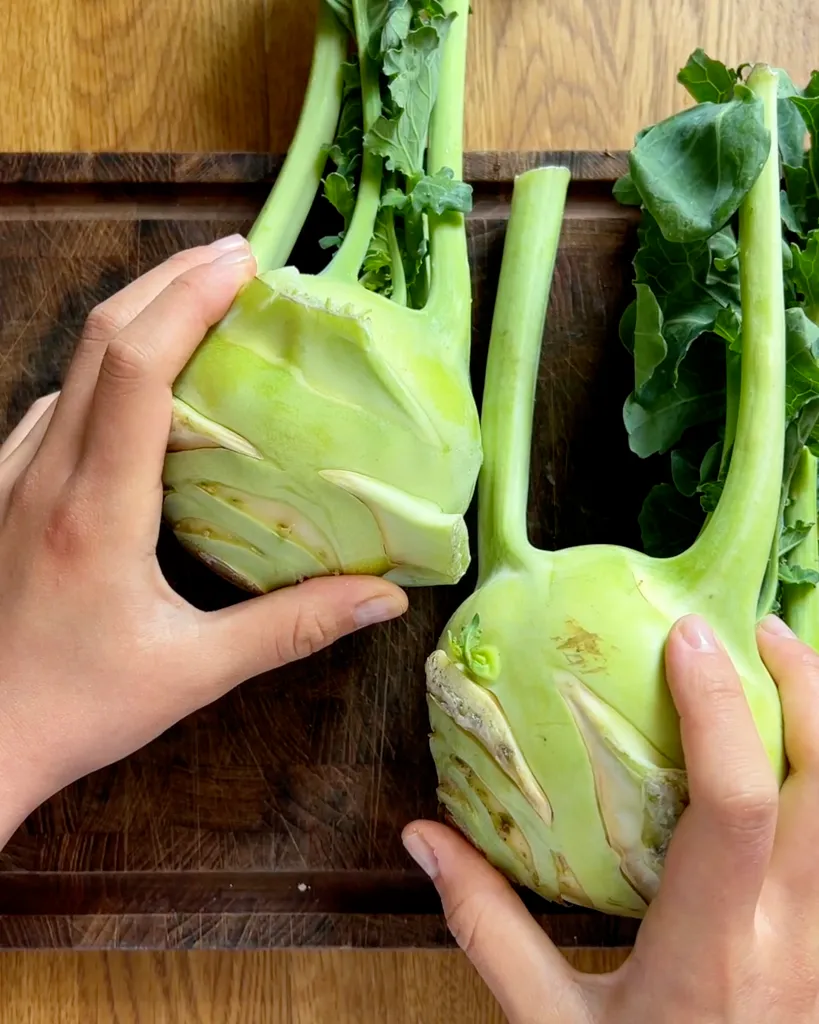
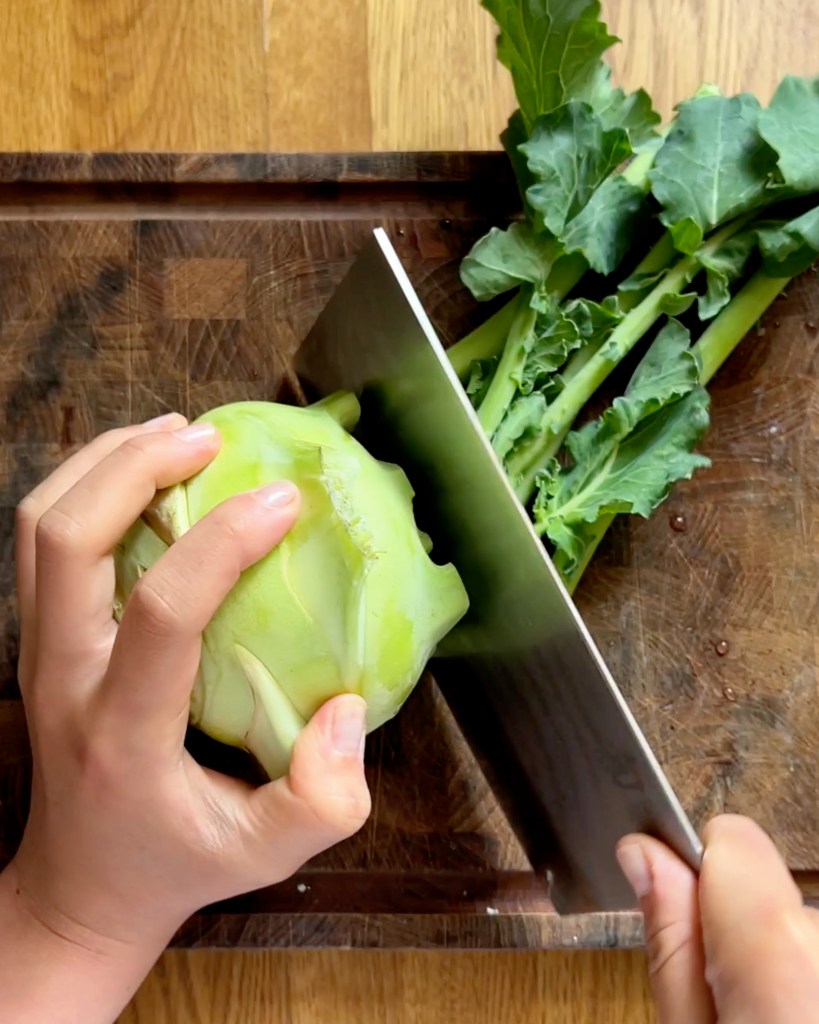
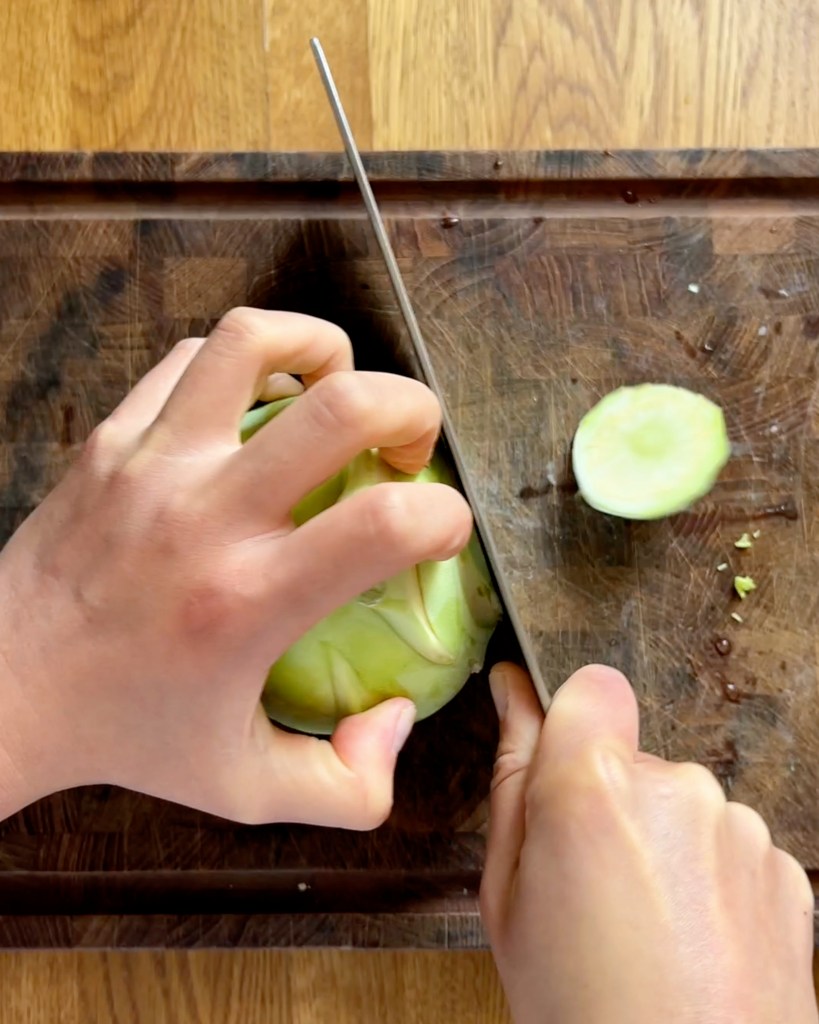
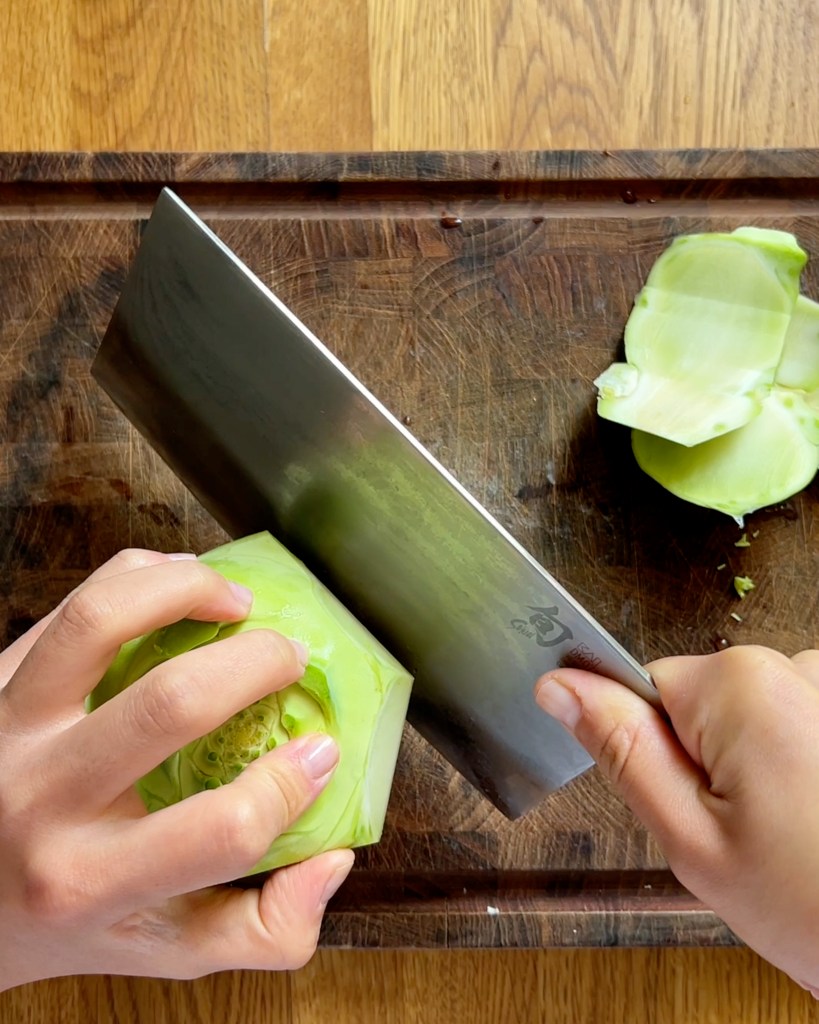
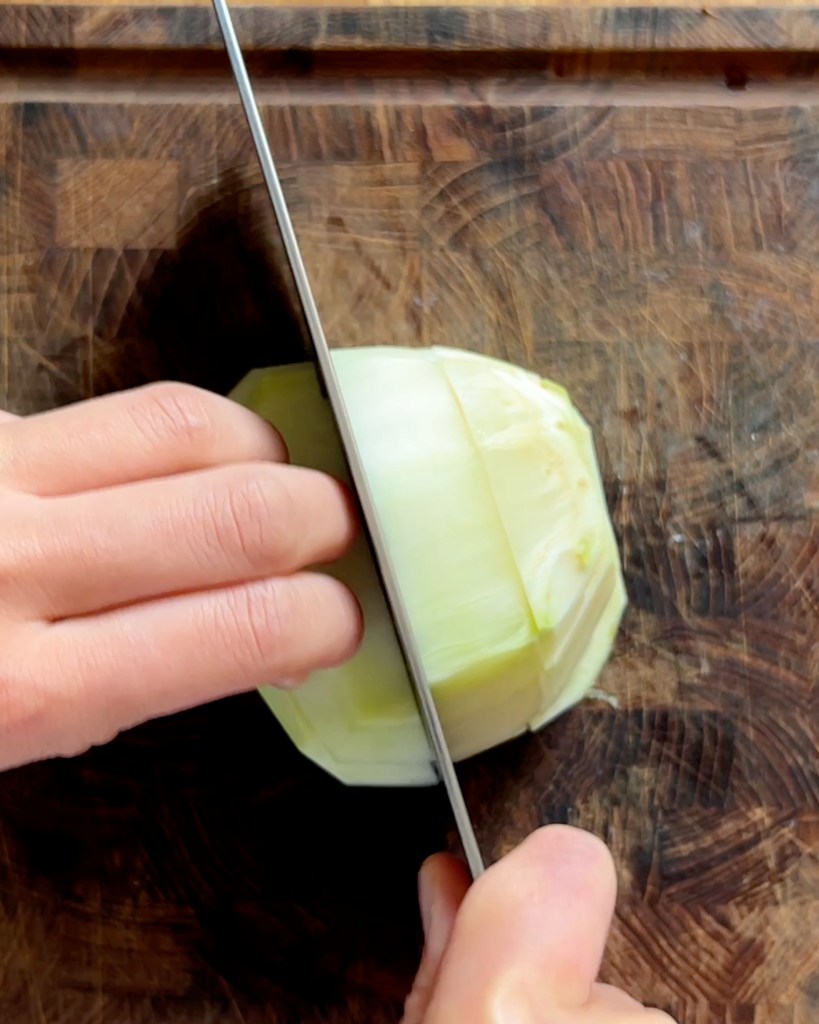

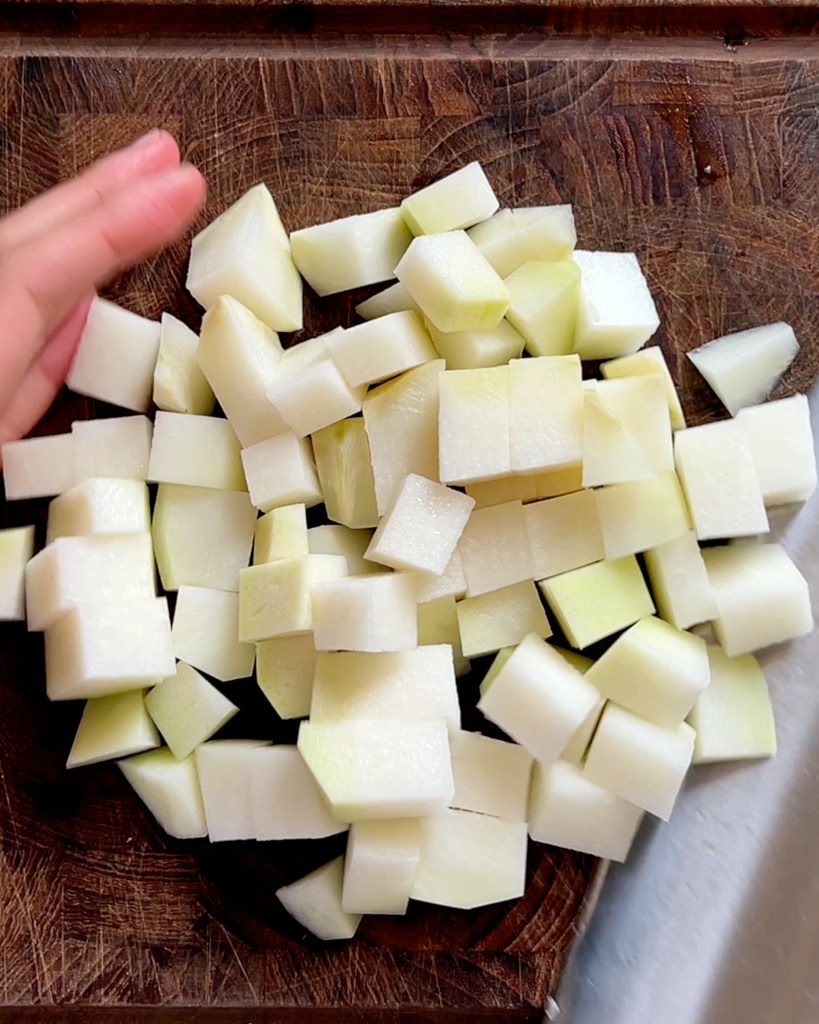

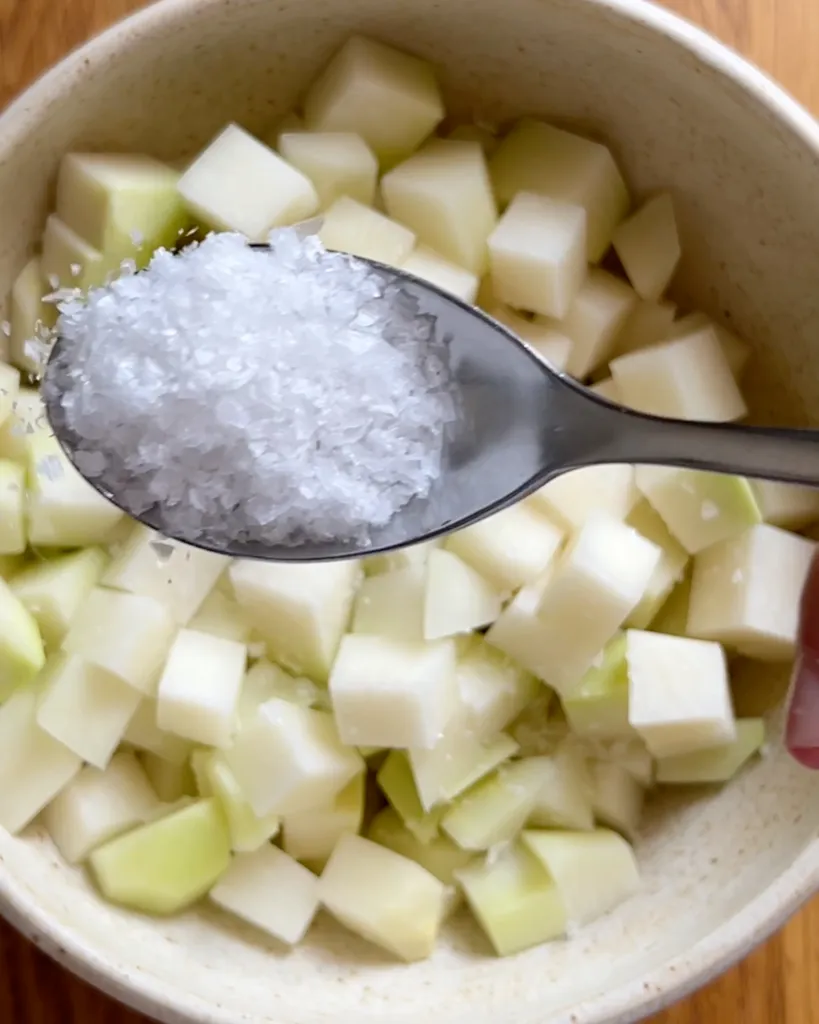



Preparing Rice "Glue"
This is the binder so that the kimchi sauce sticks on. While it's best to use glutinous rice flour, it's not something readily in many kitchens. I used leftover rice and water to thicken to a paste. It will be easier to achieve a thicker consistency if blended.
- Combine rice or mochiko flour with water.
- Heat on medium-high heat and stir.
- Turn the heat off once the glue comes to the desired consistency. You should aim for consistency where it still can be poured onto the kimchi but coat the back of your spoon.
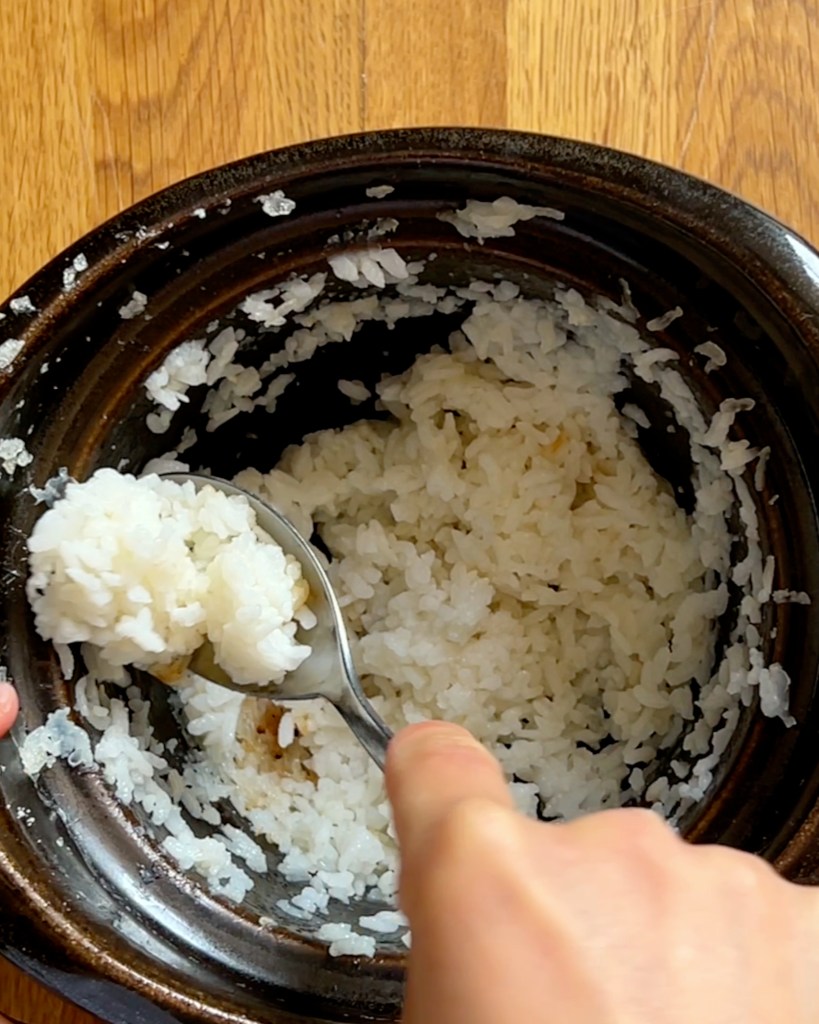


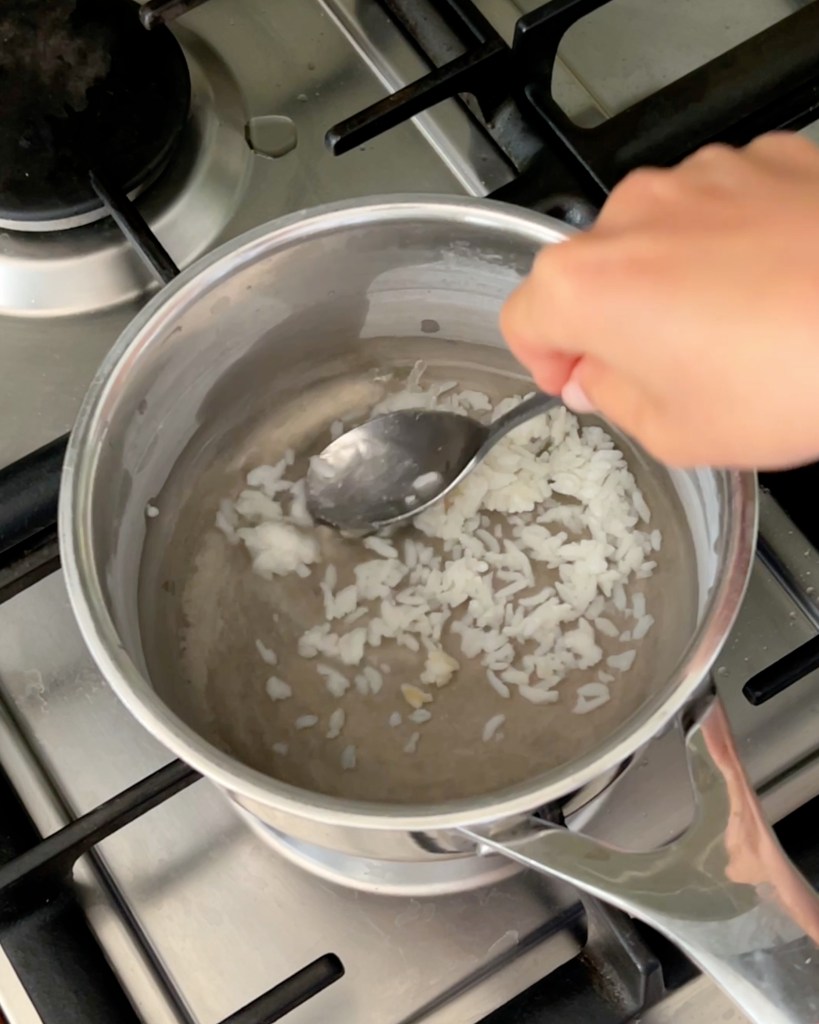

Sauce
This sauce is incredibly versatile. Feel free to experiment with other salted ingredients using this sauce. Traditionally, many families would use green plum extract as the liquid sweetener for the yeast to feed on and ferment because of its floral and citrus notes. However, it's not a commonly found condiment outside Korea and the US, so I opted to use orange juice as a substitute! Feel free to use any fruit juice other than pineapple, as pineapple has an enzyme called bromelain that can completely dissolve your kimchi.
- Blend onion, garlic, ginger, and fruit juice together.
- Combine the blended aromatics in a large bowl with gochugaru, fish sauce, cooled rice glue, and sugar.
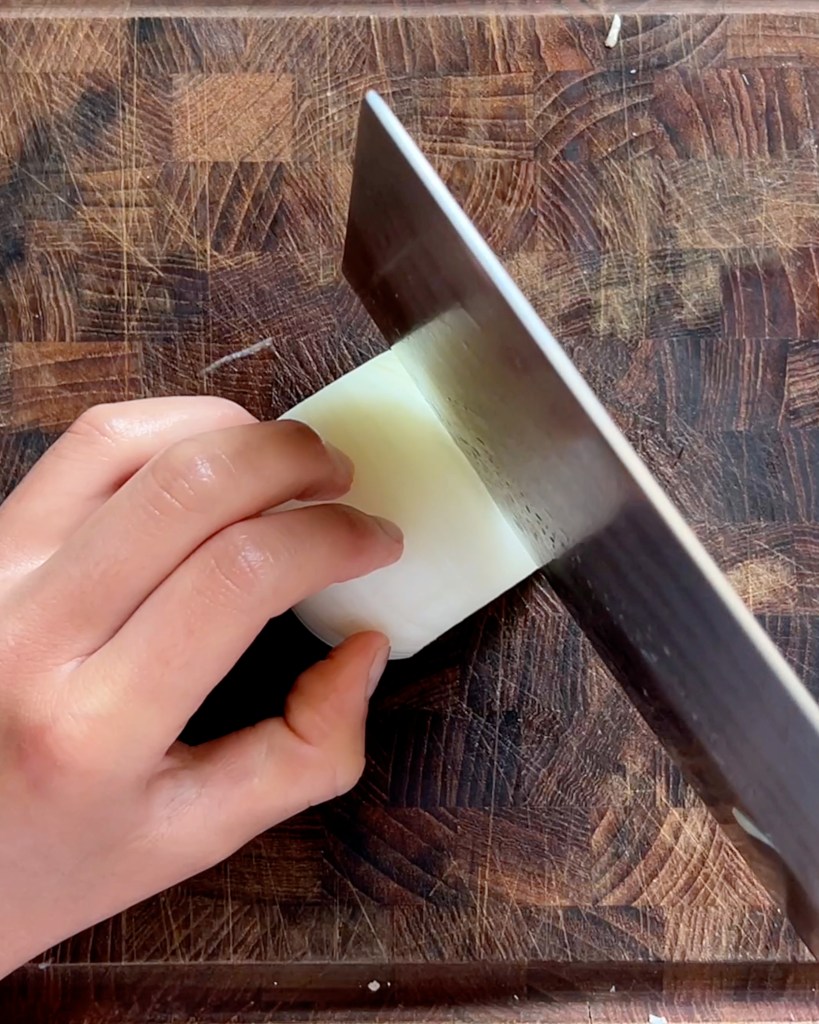

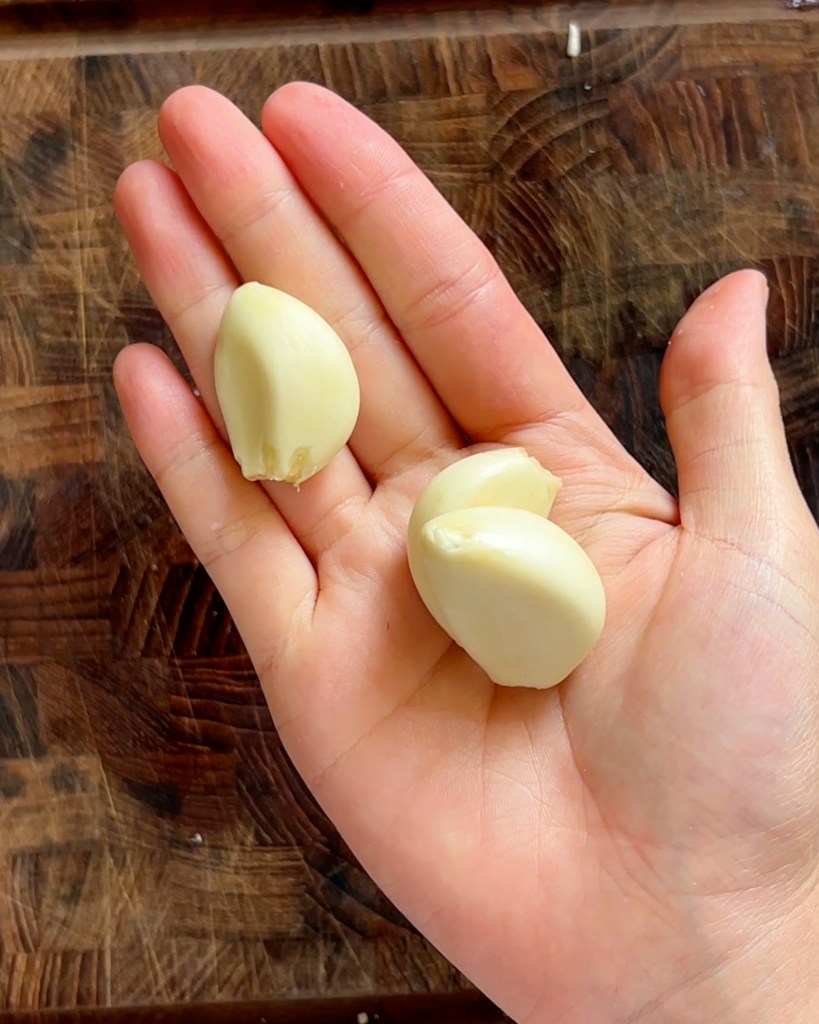
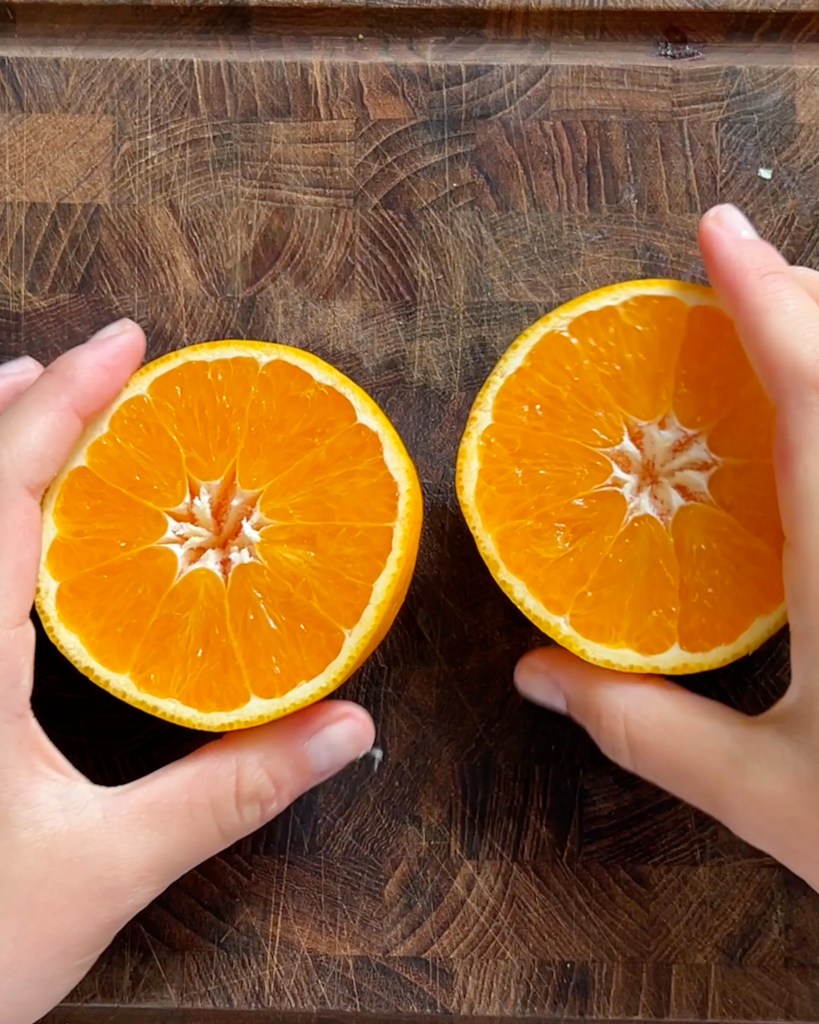
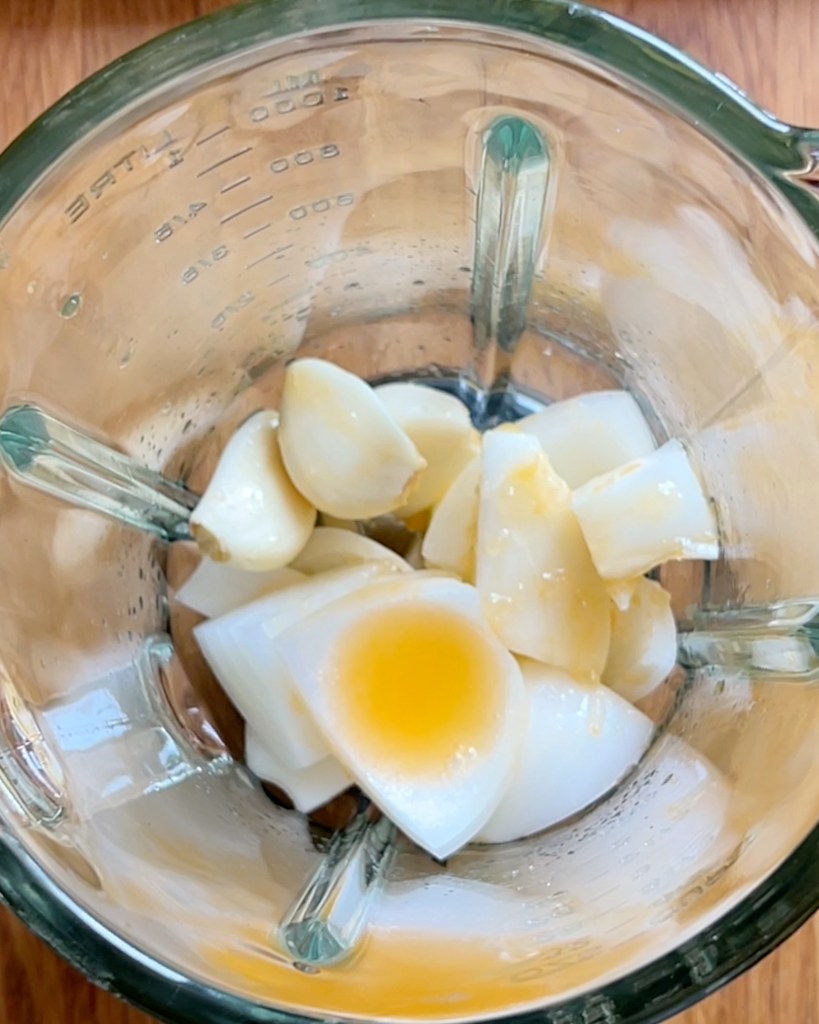

Assembly
- Discard any excess liquid from the kohlrabi.
- Combine the prepared sauce with the kohlrabi.
- Eat fresh, or store in an air-tight container and ferment slowly in the fridge. It should be well fermented in a week. Enjoy!
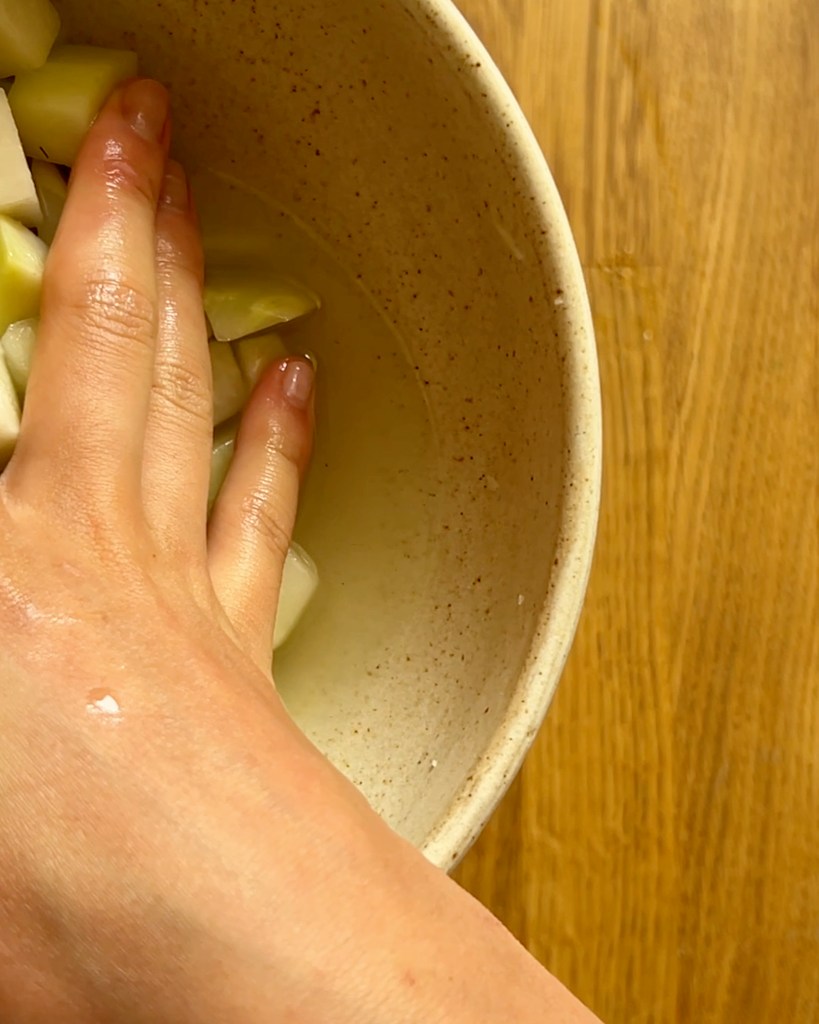


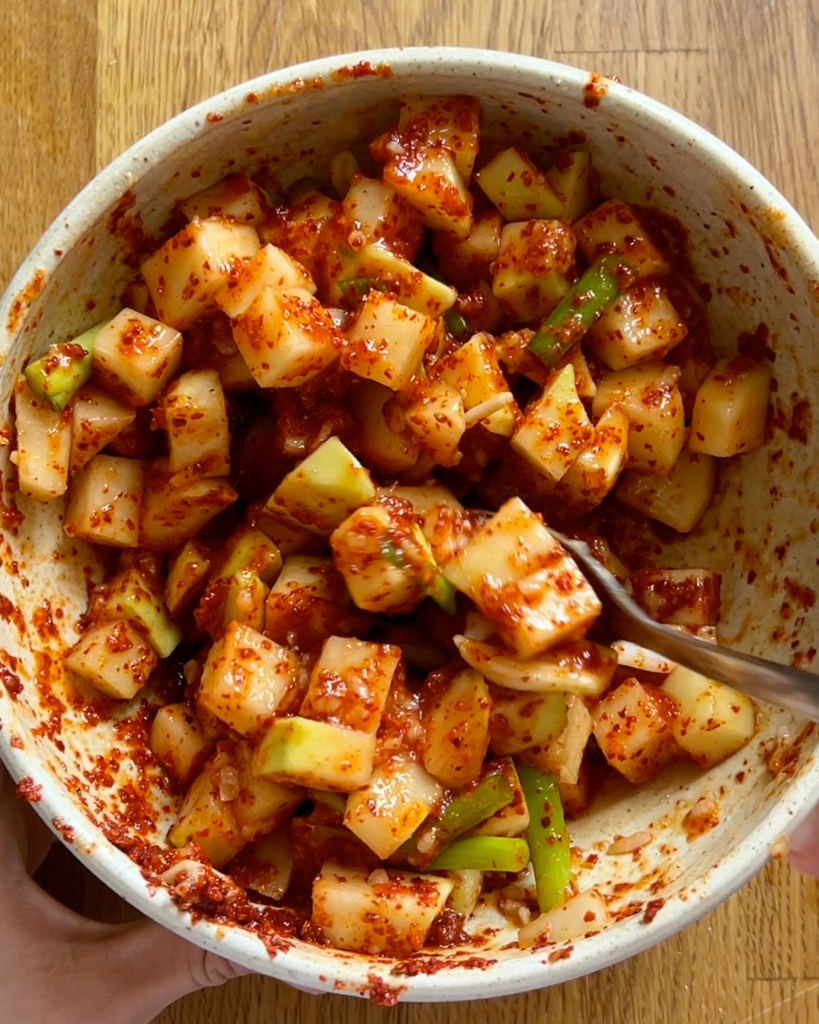


Recent recipes
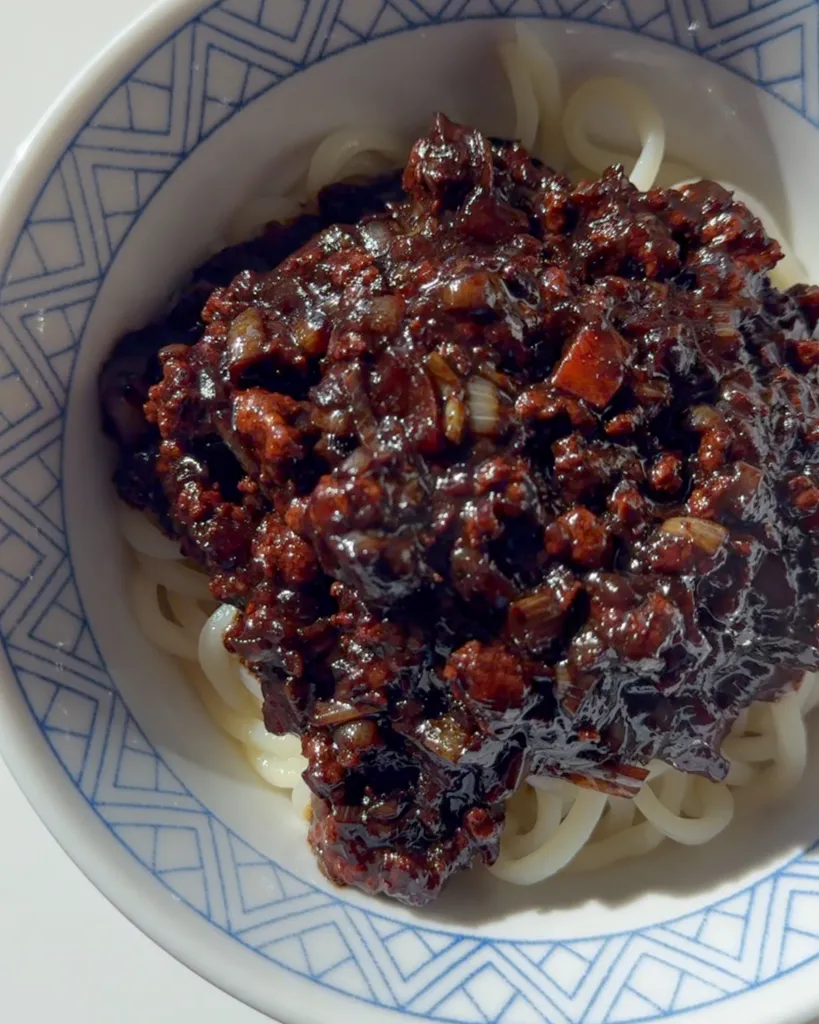
5 Ingredient Jjajang Sauce

Brown Butter Soy Caramel Cookies

Hi, I’m Tina aka Doobydobap!
Food is my medium to tell stories and connect with people who share the same passion. My recipes are a culmination of my experiences. I hope you enjoy recreating them at home, and if you do, make sure to tag me on Instagram!
Recent recipes

5 Ingredient Jjajang Sauce

Brown Butter Soy Caramel Cookies
Hey Doobies, thanks for visiting! Join my mailing list for more delicious recipes and stories.

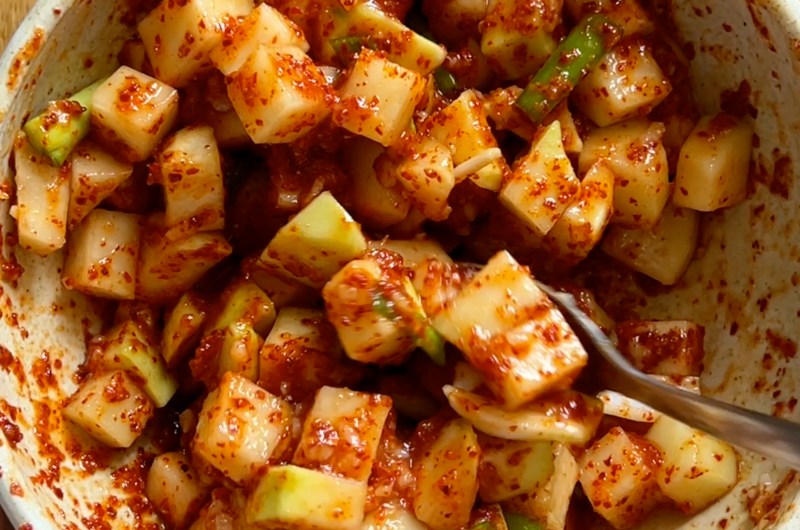
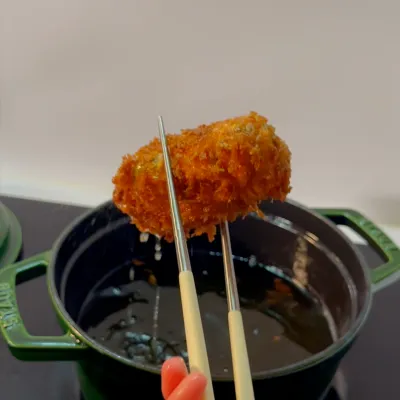
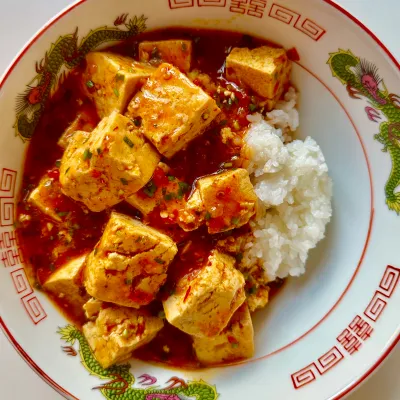

Comments